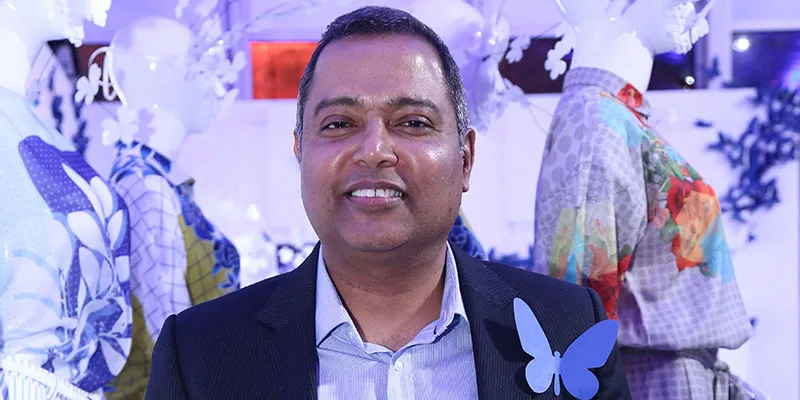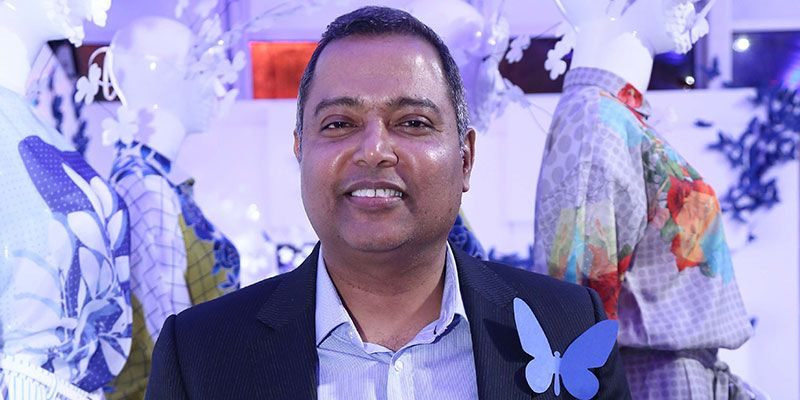Data is helping us deliver in an optimal way, says Arun Sirdeshmukh, Head – Amazon Fashion, India
With fashion emerging as one of the dominant verticals driving Amazon’s growth, the man who heads Amazon Fashion in India reveals how harvesting data analytics is helping increase the Prime customer base.
Despite a slowdown over the last few years, the Indian online retail market has emerged as one of the fastest growing in the world. And with fashion being one of the dominant verticals driving this growth, YourStory spoke to Arun Sirdeshmukh, Head - Amazon Fashion, India, to understand what the US-based ecommerce giant is doing to expand its online fashion market in India, where penetration is below three percent, as compared with the 10-12 percent in the West.
Arun spoke on Amazon India’s fashion vertical’s performance, and how the e-tail major is harvesting data analytics to increase its Prime customer base.

Edited excerpts of the interview:
YoutStory: How has the fashion vertical performed in FY18?
Arun Sirdeshmukh: While we added more new sellers, we have seen an incremental gain in the number of selections from existing sellers. We have also partnered with some brands exclusively; several of the best brands in the country are in exclusive tie-ups with Amazon.
YS: How do you ensure that brands partner with you on exclusively?
AS: We have created dedicated brand pages and tell the story and history of the brands. We involve customers in a manner that is greater than just the transactions. Of course, we are a great place to buy. How do we engage customers more in terms of relating to these brands? We carry these brands in a lot of our editorial content. We talk about trends, what is new this season, have dialogues and create relationships in social media, and ensure engagement with customers by engaging them through these brands. We work very deeply with these brands.
YS: What has been your strategy to get brands loyal to your marketplace?
AS: The way we work is to increase our exclusive available lines or collections of a brand that may be available with other marketplaces. For example, we started with Marks and Spencer last year. We launched it when it was not on the platform. But now we have the largest selection of Marks and Spencer available anywhere online. The knitwear collections and beauty products of Marks and Spencer are exclusively available only on Amazon.
So we work with brands that are also available on other marketplaces, but we also focus on how to create a special experience for customers. Like that, we have done a lot of work with existing brands. Another example is Arrow. Last year we launched a special line of shirts called “My Smart Shirt” by Arrow. Similarly, the online launch of Van Heusen’s inner wear was exclusively on Amazon.
We work with the top thousand brands for Amazon Fashion. In fashion brands, we have added more than a few hundred last year. The partnership with Shoppers Stop was to ensure that Shoppers Stop’s range of products, lines, and offerings are exclusively available on Amazon apart from its own online store.
YS: Can you tell us how you are working with sports brands?
AS: Even in sports, many top sports brands are doing business with us on an exclusive basis. Take, for example, the case of New Balance – that has been in India and on many ecommerce sites as well, but since the second half of last year, decided to be exclusively on our platform. This is a testimony to what is happening overall in the sports portfolio. We created a dedicated team for the sports portfolio; we have a sports callout on the site.
We carved out sports as a separate vertical that we will have for sports brands, and give them the right brand pages, content, and work with them. Two of the world’s largest brands of sports activewear are now exclusive with us.
YS: Of late, you have said that majority of your customers are coming from Tier II and III towns. How are you tapping customers whose preferences differ from urban customers?
AS: We have more than doubled our fulfillment capacity centres from 20 to 62 till now. We are going deeper into the country. It is not about having items and inventories for you to purchase; it is about having it near to the buyer. We would like you to have that product available to you very quickly.
In my view, the 2.0 of ecommerce was the launch of the Prime programme. We did that towards the end of 2016. In 2017, we saw the ramp-up and growth of our Prime customer base. Already one out of three shipments of fashion that goes out is to Prime customers. Prime customers tend to be our best customers because they come back and shop most often. And to be able to service that kind of volume and products in fashion, which has a very large SKU (Stock Keeping Unit) counts, we enable a lot of data analytics. Let’s say, for example, if you are in Delhi, how should I know what products to keep near you to ensure that you get the delivery next day or the day after?
When you as a customer come to the Amazon site, you see two labels – one is “fulfilled by Amazon” and another is the Prime badge. For “fulfilled by Amazon”, we keep the products at our fulfilment centres and sellers use them where the turnaround is very fast. Then there is the Prime badge or logo. The Prime badge may not be on the item. This depends on where the item is and where you are as a customer. So there could be a product where all items have the Prime badge because the customer is in Delhi and the product is also in Delhi.
But there are many instances when items are not Prime-enabled. Say if the customer is in Agartala, there may not be any item that is Prime-enabled. So we are studying everything. A product that is Prime-enabled and something that is not. How do we make more products Prime-enabled? How do we keep our inventories based on customer demand and location, and how do we keep products closer to where they are? That involves a large amount of data crunching. We have algorithms to tell us who is buying what and at what time. The system is churning a lot of data and this helps us figure out the most optimal way to deliver products.
YS: How are you tapping designers to boost online fashion sales?
AS: We continued our partnership with Amazon India Fashion Week (AIFW). We had two editions of that – one in March and another in October and another one this March.
And that’s a partnership that has led to the creation of very exciting store on the site called “Designer Boutique”. We started with 40 designers. Till now, these designer pieces could be accessed only in a few stores. It is empowering and creating access for these products across the country. Designer Boutique has grown to more than 100 designers in the last six months.
YS: Please tell us a bit about the design studio you launched last year.
AS: After the successful launch of the fashion studios in New York and London, Amazon launched its third imaging studio, Blink, in Gurgaon. It is spread over 44,000 square feet with state-of-the-art digital imaging facility. It will help us work closely with brands for all our imaging, lighting, and photography work. It is dedicated to improving our imaging content, editorial content, and our fashionability.






